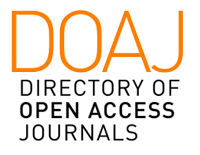[GW28-e0905]
Plasma HDL-C Responses to Endurance Exercise Training: Is It a “wonder” Drug? A Meta-analysis of Randomized Controlled Trials
Runlu Sun1 Canxia Huang1 Jieyu Jiang2 Jinlan Bao1 Yuling Zhang1
1.Sun Yat-sen Memorial Hospital, Sun Yat-sen University
2.The Sixth Affiliated Hospital, Sun Yat-sen University
Objectives: Evidence is lacking for the exercise characteristics in increasing HDL-C level regardless of endurance exercise elevating HDL-C level. The aim of this study is to clarify the effect and characteristics of exercise in increasing HDL-C in randomized control trials (RCTs).
Methods: The potential RCTs were identified by using electronic and manual searches between 1999 and 2012. The original articles selected for all prospective studies that assessed potential associations between endurance exercise training and changing level of HDL in adults (≥18 years of age at baseline) but excluded subjects having specific medical problems in which treatments such as with drugs would influence the effect of exercise (history of cancer, hemodialysis treatment and coronary heart disease). The methodological quality of each included trial was assessed by means of the instrument described by Jadad et.al. Results were expressed as WMD (weighed mean difference) and 95% confidence intervals (CIs). A univariate regression and a multivariate regression were performed to evaluate the exercise characteristics in HDL-C level. Subgroup analysis was used to explore sources of heterogeneity. Meta regression was used to examine the association between net change in HDL-C and lipid profiles of pre-exercise. Data were analyzed using Stata SE (12.0).
Results: 14 RCTs with total 777 subjects were included in this meta-analysis. Net change in HDL-C level was increased significantly (WMD: 4.41 mg/dl; 95% CI: 2.16- 6.66 mg/dl; p<0.001) in exercise intervention group. Univariate and multivariate analysis indicated that exercise length may be a good predictor of net change in HDL-C level (r=0.56, p=0.01 and r=0.43, p=0.006). By subgroup analysis, we found exercise length; subject’s charactersitics, continent, BMI and quality assessment effected the net change in HDL-C. Meta-regression showed that subjects with a lower TC level responded better to exercise training, leading to a higher net change of HDL-C level (p=0.012).
Conclusions: Our study suggests that regular endurance exercise increases HDL-C level with longer exercise length and lower TC level. Higher HDL-C level by endurance exercise results in limiting risk for atherosclerosis and prevent cardiovascular disease in healthy as well as in metabolic syndrome.














